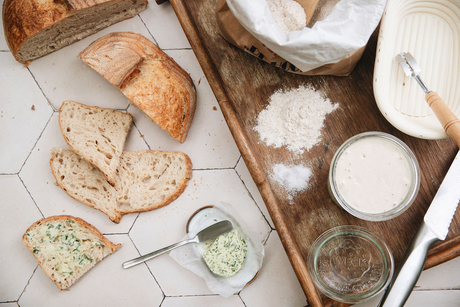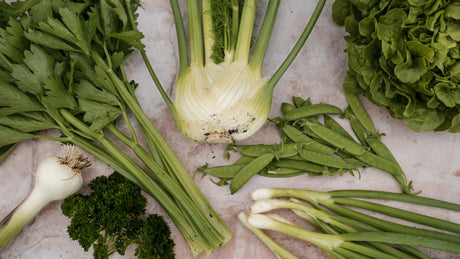Growing Szechuan pepper (also known as Sichuan pepper, Chinese pepper or toothache tree) can really take your dishes to the next level. Star chefs love it. The Szechuan pepper is not a pepper like we know the Jalapeno or the Habanero but a perennial plant that produces peppercorns. Szechuan pepper are the dried berries of the Zanthoxylum s imulans plant that grows as a shrub.
What does Szechuan pepper taste like?
Szechuan pepper offers a unique taste that differs from the taste of the regular black or white pepper that we know from the pepper mill. It is important to know that Szechuan pepper does not belong to the same family as regular white and black peppercorns from the mill (Piper nigrum). Szechuan pepper comes from the Zanthoxylum simulans, which belongs to the Rutaceae family. The taste of Szechuan pepper is characterized by the following properties:
- Citrusy: The bulbs of the Szechuan pepper plant have a strong, citrusy flavor reminiscent of lemon or lime. This gives it a refreshing and bright character.
- Spicy: Sichuan pepper is known for its tingling and prickly sensation on the tongue. It often causes a mild numbing sensation, similar to a mild electric shock.
- Woody and earthy: In addition to the citrusy notes, the fruits of the Szechuan pepper plant also offer woody and earthy flavors, which provides depth to the taste.
- Heat: Szechuan pepper isn't necessarily hot in the sense of spiciness like chili peppers, but it does have a subtle heat that builds slowly.

When do you use Szechean pepper in cooking?
The flavor of Szechuan pepper is often used in Chinese cuisine to create a unique flavor profile known as “ma-la.” This refers to the combination of the tingling, pungent sensation of Szechuan pepper (ma) and the heat of chili peppers (la). Together, they add complexity and depth to dishes and are a signature ingredient in Sichuanese and other regional Chinese cuisines.
How do you grow a Szechuan pepper plant?
Here are the 7 steps to growing a Szechuan pepper plant:
Step 1: Purchase seeds or young Sichuan pepper plants
It is not easy to get good germinating seeds of the Szechuan pepper plant. It is easier to buy a young plant that has been carefully cultivated by a grower. In the autumn/winter you can buy young, 1-year-old seedlings on bare roots quite cheaply to pot in a 5-litre pot . Use 70% quality potting soil and 30% perlite . In the spring you can buy rooted plants in pots. You can plant the plants out in the spring.

Step 2: Choose the right location for your szechuan plant
Sichuan pepper plants thrive in a sunny, well-drained location. Make sure the soil is well prepared with plenty of organic matter. A trick to know if your soil is suitable is to check during the winter whether there are puddles left where you want to plant your Sichuan pepper plant . If the spot remains accessible during the winter and the bush, because the plant forms a bush, gets plenty of sun during the day ... then you have found an ideal spot.
Step 3: When is the best time to plant your Szechuan pepper?
Plant seeds or young plants in spring or early summer, after the last frost. Allow sufficient space between plants (usually about 1-1.5 meters apart).

Step 4: How to maintain your Szechuan plant ?
Provide regular watering, but avoid allowing the soil to remain constantly soaked. Water the plants when the top inch of soil feels dry. Also fertilize the plants occasionally with a balanced vegetable garden fertilizer .
Step 5: How to prune a Szechuan plant ?
It doesn’t really matter how you prune your szechuan shrub. Prune the plants when necessary to control their growth and shape. This can help with air circulation and prevent disease. Never prune back more than 30% of the shrub. But that is a rule of thumb that applies to many perennials, including fruit trees and soft fruit.
Step 6 When can you harvest your flavor bombs?
Szechuan pepper berries can be harvested as soon as they are ripe. This usually happens in the fall. Carefully pick the berries from the plant. How can you tell when the berries are ripe? It is mainly in the color. The berries go from light green or light red to deep red. It is best to pick the berries when they are still springy, not when they are already dried up on the plant. Crush your berries between your fingers and smell. If you smell citrus and pepper, then you can start harvesting. Be careful when tasting, Szechuan peppers have a spicy citrus/pepper flavor that tickles your tongue.

Step 7: Processing your red grains full of spice
Of course, we are not done yet. Szechuan pepper, like black or white pepper, is not made to be eaten without further ado. After harvesting, the berries must be dried.
- Spread the berries evenly on a plate and place them in a warm place, preferably out of the sun.
- After a few days you will see the first berries burst open. The berry consists of a skin and a black seed that is in the skin.
- Wait until all the berries have split open. This usually takes 10-14 days.
- Sort the peels and seeds. The peels have a nice taste and you keep them. You can throw away the black seeds or sow them yourself to get new plants.
- The peels can be ground in a pepper mill or used whole in dishes.
Finally
Please note that Szechuan pepper plants are slow growing and it may take some time before you get a significant harvest. Be sure to regularly inspect the plants for signs of disease or pests and take appropriate measures to combat them.
Szechuan pepper is popular for its unique flavor and tingling sensation on the tongue, and it can be used in a variety of dishes, especially in Oriental cuisine.
So, I hope you got to know a new plant or learned more about it. I hope you find my contribution valuable in your search for more locally produced food and diverse flavors on your plate.
?? (tasty),
Tom







